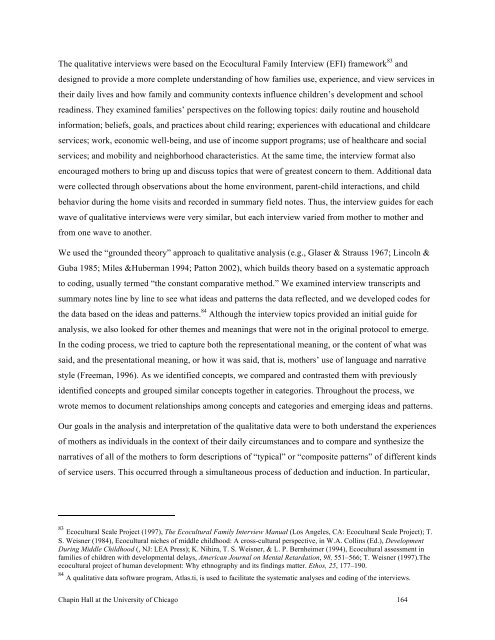2011 The Palm Beach County Family Study (Full Report)
2011 The Palm Beach County Family Study (Full Report)
2011 The Palm Beach County Family Study (Full Report)
- No tags were found...
You also want an ePaper? Increase the reach of your titles
YUMPU automatically turns print PDFs into web optimized ePapers that Google loves.
<strong>The</strong> qualitative interviews were based on the Ecocultural <strong>Family</strong> Interview (EFI) framework 83 anddesigned to provide a more complete understanding of how families use, experience, and view services intheir daily lives and how family and community contexts influence children’s development and schoolreadiness. <strong>The</strong>y examined families’ perspectives on the following topics: daily routine and householdinformation; beliefs, goals, and practices about child rearing; experiences with educational and childcareservices; work, economic well-being, and use of income support programs; use of healthcare and socialservices; and mobility and neighborhood characteristics. At the same time, the interview format alsoencouraged mothers to bring up and discuss topics that were of greatest concern to them. Additional datawere collected through observations about the home environment, parent-child interactions, and childbehavior during the home visits and recorded in summary field notes. Thus, the interview guides for eachwave of qualitative interviews were very similar, but each interview varied from mother to mother andfrom one wave to another.We used the “grounded theory” approach to qualitative analysis (e.g., Glaser & Strauss 1967; Lincoln &Guba 1985; Miles &Huberman 1994; Patton 2002), which builds theory based on a systematic approachto coding, usually termed “the constant comparative method.” We examined interview transcripts andsummary notes line by line to see what ideas and patterns the data reflected, and we developed codes forthe data based on the ideas and patterns. 84 Although the interview topics provided an initial guide foranalysis, we also looked for other themes and meanings that were not in the original protocol to emerge.In the coding process, we tried to capture both the representational meaning, or the content of what wassaid, and the presentational meaning, or how it was said, that is, mothers’ use of language and narrativestyle (Freeman, 1996). As we identified concepts, we compared and contrasted them with previouslyidentified concepts and grouped similar concepts together in categories. Throughout the process, wewrote memos to document relationships among concepts and categories and emerging ideas and patterns.Our goals in the analysis and interpretation of the qualitative data were to both understand the experiencesof mothers as individuals in the context of their daily circumstances and to compare and synthesize thenarratives of all of the mothers to form descriptions of “typical” or “composite patterns” of different kindsof service users. This occurred through a simultaneous process of deduction and induction. In particular,83 Ecocultural Scale Project (1997), <strong>The</strong> Ecocultural <strong>Family</strong> Interview Manual (Los Angeles, CA: Ecocultural Scale Project); T.S. Weisner (1984), Ecocultural niches of middle childhood: A cross-cultural perspective, in W.A. Collins (Ed.), DevelopmentDuring Middle Childhood (, NJ: LEA Press); K. Nihira, T. S. Weisner, & L. P. Bernheimer (1994), Ecocultural assessment infamilies of children with developmental delays, American Journal on Mental Retardation, 98, 551–566; T. Weisner (1997).<strong>The</strong>ecocultural project of human development: Why ethnography and its findings matter. Ethos, 25, 177–190.84 A qualitative data software program, Atlas.ti, is used to facilitate the systematic analyses and coding of the interviews.Chapin Hall at the University of Chicago 164
















